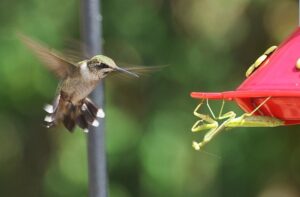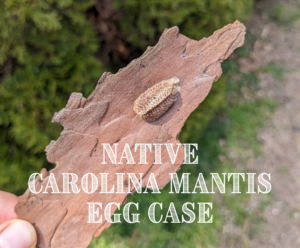October 4th is World Animal Day! So many amazing animals call Virginia home. Highlighted here is a seasonal visitor, the Ruby-throated Hummingbird (featured photograph above by Larry Tipton @larryhokie on Instagram), which is only found in the Americas. Hummingbirds will overwinter in central America, and move up the eastern half of the USA and into Canada for the warm seasons to take advantage of new blooms and nesting opportunities. They migrate straight across the Gulf of Mexico, quite the achievement for such a small bird! Want to see more hummingbirds in your space? Plant native flowering plants that hummingbirds love, and reduce their predators! [See our Conservation page for more info about native plants.] Two common hummingbird predators are outdoor cats and, to the surprise of many, the larger invasive preying mantis species, which may hang out on hummingbird feeders and snatch hummingbirds out of the air. We have two large mantis species invading North America—capable of turning a hummingbird into a snack.

The European and Chinese mantis are predators of our own native mantis as well: the smaller Carolina Mantis. The most straightforward way to identify and prevent the invasive mantids is by the appearance of their egg cases. You may see these egg cases while exploring outside- the native Carolina mantis has an egg case that is neat and tubular, with a distinctive stripe down the center.

The invasive species have egg cases that are larger (larger than a quarter) and have a more bubbly, blobby appearance, as in the picture below.

Let’s take care of our incredible native wildlife! You can bag and trash the egg cases of the invasive mantids if you come across them.
Volunteer with us at FOLAR’s Stewardship Saturday work sessions!
CONTACT: Elise Neuscheler, Environmental Stewardship Coordinator, and register for upcoming Stewardship Saturdays on our Meetup page.
Invasive species are plants and pests that are not native to an area and can cause environmental and ecological harm. They do not have many natural predators and often do not provide a food source to native animals. We are working at FOLAR to identify the invasive species along the river and come up with a management plan. Managing invasive species takes hard labor and many years to control.
View a list of Virginia’s invasive species from the Virginia Department of Conservation and Recreation.







